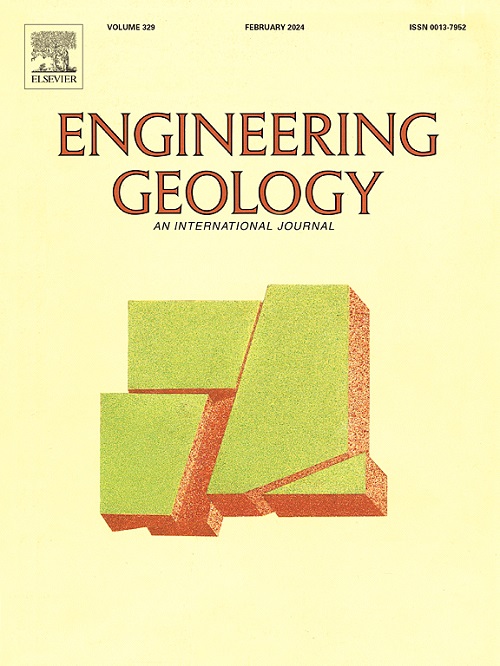Assessment of near-surface undrained shear strength of soft seabeds with free fall cone penetrometer testing in the northern Baltic Sea
IF 6.9
1区 工程技术
Q1 ENGINEERING, GEOLOGICAL
引用次数: 0
Abstract
Free fall cone penetrometer testing (FFCPT) allows for efficient site reconnaissance and soft seabed undrained shear strength (su) assessment in a shallow water environment. The FFCPT is a particularly useful tool for near-surface characterization for cable route assessment associated with offshore renewable developments. This study presents results from an in-situ FFCPT, seismoacoustic survey and sediment coring campaign in a nearshore site in the Gulf of Finland, northern Baltic Sea. An extended FFCPT interpretation model has been applied, including friction on the shaft (as well as tip resistance), rate dependency and soil buoyancy. The derived FFCPT profiles are repeatable at a given location, while the shapes of the su profiles capture different depositional environments. The derived dynamic FFCPT su is lower than measured in the laboratory by fall cone and triaxial tests. This is potentially due to hydrodynamic drag reducing the FFCPT terminal velocity and soil drag affecting the penetration depth and dynamic su; and due to the reconstituted nature of the laboratory samples and very low stress levels being considered that are difficult to achieve in the laboratory. The magnitude of derived su and characteristic shapes in the FFCPT profiles enable ground-truthing the interpretation of seismoacoustic profiles. This study contributes to the evidence base supporting the FFCPT as a valuable supplement, or to partially replace sediment coring and laboratory measurements, for offshore site assessment.
波罗的海北部软基近地表不排水抗剪强度的自由落体锥贯入试验评价
自由落体锥入度仪测试(FFCPT)可在浅水环境中进行高效的现场勘察和软海床排水抗剪强度(su)评估。自由落体锥入度仪是一种特别有用的工具,可用于近海可再生能源开发相关电缆线路评估的近表层特征描述。本研究介绍了在波罗的海北部芬兰湾一个近岸地点进行的原位 FFCPT、地震声学勘测和沉积物取芯活动的结果。应用了扩展的 FFCPT 解释模型,包括轴上的摩擦力(以及顶端阻力)、速率依赖性和土壤浮力。得出的 FFCPT 剖面在特定地点具有可重复性,而 su 剖面的形状则反映了不同的沉积环境。得出的动态 FFCPT su 值低于在实验室通过落锥试验和三轴试验测得的值。这可能是由于流体动力阻力降低了 FFCPT 的末端速度,土壤阻力影响了穿透深度和动态 su,以及由于实验室样品的重组性质和考虑的应力水平非常低,在实验室中很难实现。FFCPT 剖面中的推导 SU 值和特征形状有助于对地震声剖面的解释进行地面实况验证。这项研究为支持 FFCPT 作为近海场地评估的重要补充或部分替代沉积物取芯和实验室测量的证据基础做出了贡献。
本文章由计算机程序翻译,如有差异,请以英文原文为准。
求助全文
约1分钟内获得全文
求助全文
来源期刊

Engineering Geology
地学-地球科学综合
CiteScore
13.70
自引率
12.20%
发文量
327
审稿时长
5.6 months
期刊介绍:
Engineering Geology, an international interdisciplinary journal, serves as a bridge between earth sciences and engineering, focusing on geological and geotechnical engineering. It welcomes studies with relevance to engineering, environmental concerns, and safety, catering to engineering geologists with backgrounds in geology or civil/mining engineering. Topics include applied geomorphology, structural geology, geophysics, geochemistry, environmental geology, hydrogeology, land use planning, natural hazards, remote sensing, soil and rock mechanics, and applied geotechnical engineering. The journal provides a platform for research at the intersection of geology and engineering disciplines.
 求助内容:
求助内容: 应助结果提醒方式:
应助结果提醒方式:


